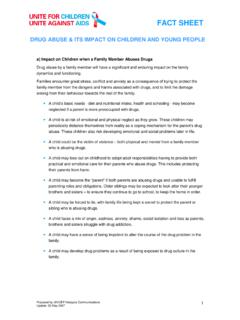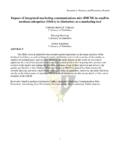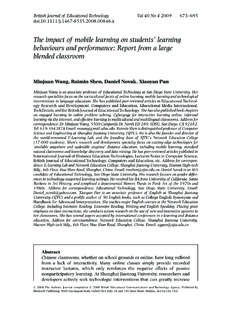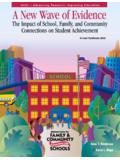Transcription of Using Research in Public Relations - English Communications
1 Public Relations Research in the Real World of Business By Laurel English , ABC. Principal, English Communications Laurel English , 2005. English Communications 12 Rambling Woods Dr. Morristown, NJ 07960. (973) 984-2525. (973) 539-7587 (fax). Laurel English 1. Public Relations Research Table of Contents Table of 1. Table of 2. Chapter 3. Chapter Introduction .. 3. Role of Research in Public 3. Sources of information for secondary 5. What PR Research Can Do .. 5. Conducting Research to Develop Strategy .. 7. Conducting Research to Monitor Programs and Evaluate Results .. 8. Types of Public Relations Research .. 10. Qualitative Research Methods .. 10. Nominal Group Technique.. 11. In-depth Interviews .. 11. Focus Groups : .. 11. Field Observations: .. 11. Q Methodology: Between Qualitative and 12.
2 Quantitative Research Methods .. 12. Content analysis .. 12. Surveys:.. 13. Research Problem .. 15. Research 15. Research Method .. 16. Case Study: Midwest Insurance Company .. 18. Case Study: Northeast Bank .. 20. Case Study: Non-governmental 23. Case Study: Manufacturing 26. Case Study: Non-profit Athletic Association .. 28. Case Study: Midwestern 30. Case Study: University .. 32. Conclusion .. 36. Appendix A: E-mail to recruit interview subjects .. 40. Appendix B: Line of 41. Laurel English 2. Public Relations Research Chapter rationale This chapter is intended to demonstrate the value of Public Relations Research to organizations, provide an overview of current Research methods, and identify best Research practices. It presents an overview of the state of Public Relations Research today, what Public Relations Research can do for organizations, and how practitioners can use Research to develop strategy and programs, monitor programs, and evaluate results.
3 It also includes a discussion on several types of PR. Research , as well as case studies of successful Public Relations Research activities in the real world. Chapter Introduction In the ideal world, Public Relations practitioners would conduct Research before launching any program or activity. What's more, the organizations they work for would demand Public Relations Research as a key element for developing the organization's strategy. Public Relations Research has the potential to build the foundation not only for better Public Relations , but better organizations in general. This chapter presents an overview of the state of Public Relations Research today: What Public Relations Research can do for organizations, and how practitioners can use Research to develop strategy and programs, monitor programs, and evaluate results.
4 It also includes a discussion on several types of Public Relations Research . The chapter also includes in-depth interviews with Public Relations practitioners who use Research for different activities that lead to organizational change. These case studies provide a real-world perspective of the realities of conducting Public Relations Research , and identify how Research helps to shape Public Relations programs. Role of Research in Public Relations When the CEO asks what different departments accomplished over the past year, the CEO wants to know how each department contributed to the organization's goals. For the Public Relations department, accomplishments should not be based on the number of press releases issued, employee newsletters published, or people who visited the intranet site.
5 These are all outputs. Instead, Public Relations accomplishments must be related to how they contribute to the success of the business. How did Public Relations influence the attitudes or behavior of key publics for the betterment of the organization? Public Relations Research is a fundamental part of identifying important issues to the organization, developing strategically based Public Relations programs, and measuring the impact of those programs on the organization. Without Public Relations Research , practitioners are left with little but outputs and hunches to report. Without Research , practitioners cannot show how Public Relations makes a difference. Broom and Dozier (1990) define Research as the controlled, objective, and systematic gathering of information for the purposes of describing and understanding (p.)
6 4). Research is an integral part of the Public Relations process. Two steps of the four-step Public Relations process, developed by Cutlip, Center, and Broom (2000), depend on Research : defining the Public Relations problem or opportunity, and evaluating the program. Similarly, Hendrix's ROPE model ( Research , objectives, program, and evaluation) and Marston's RACE model ( Research , action, Laurel English 3. Public Relations Research communication , and evaluation) rely on Research for the first and last steps of the Public Relations process (as cited by Stacks, 2002). Cutlip et al. said that Research is the foundation of effective Public Relations (2000, p. 343). Stacks said, Quite simply, without Research you cannot demonstrate the efficacy of your program (2002, p. 4). Gronstedt (1997) says that Research gives the hard data necessary to provide value to the organization, and helps provide information to make decisions that have real impact.
7 Research is critical to Public Relations management because it focuses the practitioner on goals, objectives and results, not on outputs, and creates a systematic method of doing so. Research is also fundamental to several groundbreaking models of Public Relations practice, including the open systems model and the two-way symmetrical model. The role of Public Relations should not be simply to deliver the organization's messages, at times referred to as an inside-out approach to communication (Gronstedt, 1997, p. 39). In the open systems model, Public Relations also takes an outside-in approach by communicating the beliefs, feelings, and concerns of key publics back to the organization (Gronstedt, p. 39). In the open systems model, organizations and their publics exchange information, and are influenced by each other.
8 Research is critical for facilitating this exchange. It provides a means for the organization to scan the environment to identify key publics and issues early. Research uncovers potential areas of concern so that the organization can build relationships, develop programs and take corrective action to prevent small problems from becoming major issues (Broom & Dozier, 1990; Cutlip, Center, & Broom, 2000). The two-way symmetrical model of communication , first proposed by James E. Grunig, emphasizes that the organization and its publics should be engaged in an ongoing dialog to build mutually beneficial relationships. Part of that dialog includes the use of Research . With the two- way symmetrical model, practitioners use Research and dialog to bring about symbiotic changes in the ideas, attitudes and behaviors of both the organization and its publics (Grunig, Grunig, &.)
9 Dozier, 2002, p. 308). Further Research is being done to measure relationships themselves and identify reliable indicators of good organization- Public relationships (Grunig & Hon, 1999). Grunig et al. found that Excellent Public Relations is Research based (two-way), symmetrical (although organizations constantly struggle between symmetry and asymmetry when they make decisions), and based on either mediated or interpersonal communication (depending on the situation and Public ) (2002, p. 25-26). Research is fundamental. They also said that Excellent [ Public Relations ] programs also are based on environmental scanning Research , and they are more likely to be evaluated through all forms of evaluation (scientific, clip-file, and informal), than are less excellent programs (p. 26). In addition to benefiting the organization and the Public Relations department, Research can also benefit the practitioner's career.
10 Broom and Dozier note that several studies, including their own, found a link between PR Research and PR participation in management decision-making. It's as though you don't get invited to the table where decisions are being made unless you have systematically gathered information Research to contribute to the process (1990, p. 10). Similarly, Austin, Pinkleton, and Dixon (2000) noted, It seems clear from these data that [ Public Relations ] technicians intending to advance to management-level work realize their production- Laurel English 4. Public Relations Research oriented skills will need to be supplemented by formal Research abilities if they hope to advance . (p. 249). Other researchers found similar links between Research capabilities and advancement. Grunig et al. (2002) noted that although strategic capabilities are most valued in the organization, most Public Relations department managers are better at technical and managerial roles than strategic roles.






